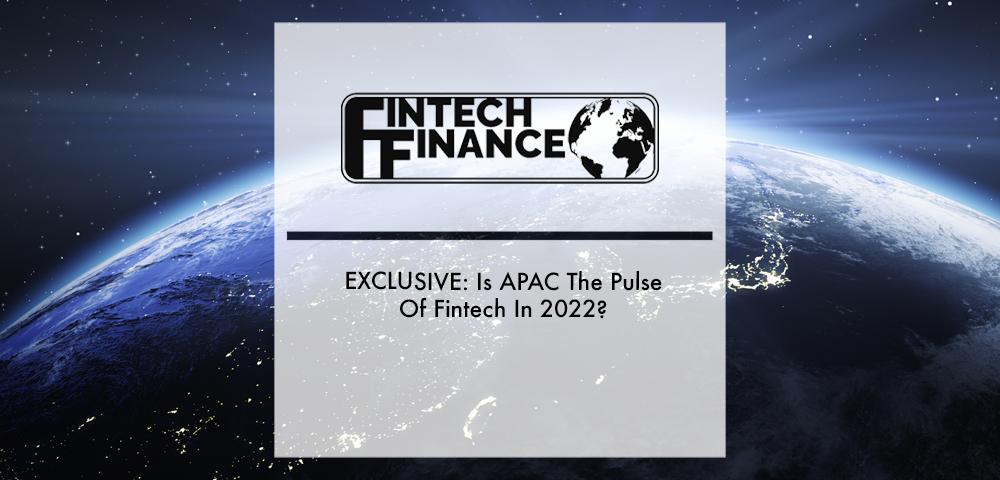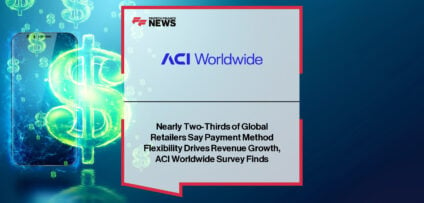Breaking News

EXCLUSIVE: Is APAC The Pulse Of Fintech In 2022?
Recently, our newsroom has taken deep dives into the fintech community on a region-per-region basis, exploring Africa’s fintech giants and the contextual factors behind Brazil’s transformational era beyond expectations in the payments industry. It was impossible for us not to tackle the APAC region next. Being an area with a startup-focused investor ecosystem, progressive regulatory support, regional access to customers and partners and a wide ranging tech talent pool, is 2022 the year that APAC cements itself as the pulse of fintech?
Payment Revolutions
The payment industry in APAC is continually innovating, both in domestic and international terms, with 20% of approximately 250 digital banks worldwide based in the region. Payment companies accounted for nearly half of the value raised by APAC fintechs in 2021. We’ll note the impact that Hong Kong and Singapore have had in the region later, but we must also pay attention to the Philippines, which saw a jump of 71% in the amount of virtual currency transactions from 2020 to 2021, largely driven by crypto-assisted remittances and digital payment options. There is no doubt increasing interest paid towards the role of blockchain as a substitute for traditionalism in the financial sector. This, coupled with the rise of smartphone usage in the region which is expected to reach 83% by 2025, has clearly strengthened the demand and usage of real-time payments for both consumers and businesses.
According to a recent , cross-border commerce opportunities with embedded finance look very fruitful for APAC SMB’s ready to expand across the globe. In fact, research from Deloitte showed SME’s to be the main drivers of digital transformation in cross-border trade, making up 85% of the region’s cross-border e-commerce sector. Embedded finance has no doubt been a strong trend for fintech in 2021 and moving further in 2022, as more cashless payments are made from the convenience of a ride-sharing app, food delivery service or in the background of other everyday transactions. The likes of Grab, WeChat and GoJek are evidence of how rich and promising this space currently is, and it is estimated to grow into a US$ 7 trillion industry. Furthermore, cross-border e-commerce platforms like Lazada or Shopee, and even embedded finance tech providers such as Currencycloud, can help SMEs capture new opportunities for growth in the future.
Hong Kong & Singapore, Who Is APAC’s Fintech Leader?
This topic could be an article in itself, however I will still touch upon the intricacies of the relationship at hand and whether we are witnessing a shift in the power dynamics between the two nations.
From as early as the second half of the twentieth century, the biggest financial organisations in Asia have directed their attention to Hong Kong. 600 fintechs that operate in Hong Kong are valued at over $1Bn and the region has announced plans to digitise all banks by 2025. It’s clearly a centre rich for its history and still continues to attract interest. However, Hong Kong is not as fruitful an environment as history paints it. The region is reeling from Beijing’s regulatory crackdown whilst Singapore’s rapid adoption of fintech, favourable political climate and legalisation of cryptocurrency all make the latter seem much more favourable. Let’s look deeper.
Singapore, has superseded Hong Kong and is unequivocally the fintech leader in Asia. A key factor in this is the governmental support the region has, shown in how the body has pledged to give $185M to the industry over the next 3 years. China’s political intervention ban on crypto trades and mining is harmful to Hong Kong, but aids Singapore incredibly, as 300 firms, including Binance and Coinbase, have headed to Singapore instead. In a recent study carried out by EY, Singapore was detailed as the “preferred getaway” into Asia for its increasingly progressive regulatory regime. The Monetary Authority of Singapore deserves praise for its “sandbox environment” that lets Singaporean fintech experiments occur, exploring specific use cases without having to satisfy licensing requirements. Significantly though, this is unparalleled in the rest of the world, and is a key reason why Singapore is so favourable and why APAC as a whole could very well become the pulse of fintech. Some of the biggest financial institutions such as Mastercard, DBS Bank, Citigroup, have established innovation labs and accelerators in Singapore, enhancing the region’s ecosystem. This is not to mention the country’s own Fintech and Innovation Group, which acts as a key advocate for the country’s economic and legislative stability, helping startups come to the main stage.
Funding & Community
Investor activity within the APAC region indicates a strong and retained interest. Private funding raised by APAC fintechs more than doubled from $5.87 billion in 2020 to $15.69 billion in 2021 APAC fintechs also sealed a staggering 754 deals in the last year and so it’s extremely evident how much energy and movement is occurring in the space. The startup culture in APAC has always been extremely progressive and assistive. Startups in Southeast Asia raised $4.7 billion across 217 transactions, which marks an increase from $1.13 billion across 118 deals in the preceding year. To name drop some specific companies, South Korea’s lending app, KakaoBank Corp. carried out a $1.1 billion rights offering. The money is definitely there.
Looking at this in more qualitative terms then, what does community-building look like for fintechs in APAC? This observation alone, to me, leads me to believe that the region is very much the pulse of fintech in 2022. Why? The startup-focused investor ecosystem, progressive regulatory support, regional access to customers and partners and a wide ranging tech talent pool all point to a healthy and prosperous fintech environment. I’ve touched on the intricacies of this already in my Singapore-Hong Kong comparative above, but it is clear that the APAC region is committed to advancing the quality of its fintech. The FinTech Innovation Lab Asia-Pacific is a perfect example of this. The lab is a competitive 12 week challenge-based program that helps early to growth stage startups refine and test their value proposition with the support of the world’s leading financial institutions. What this allows is for startups to gain invaluable insights on how to elevate their business to the next level, build strong connections with the right and relevant decision makers in the fintech world and ultimately increase the company’s visibility, audience and outreach. For a region to endorse this lab and for it to be so notable, respected and successful, with $716 raised in capital and 355+ proof of concepts, APAC’s next generation is in safe hands, a healthy pulse of the fintechs.
- EXCLUSIVE: “Passion Project” – Brice van de Walle, Mastercard in ‘The Fintech Magazine’ Read more
- FreedomPay Drives Global Merchant Innovation Read more
- FIS Brings AI-Powered Advancements to Seamless, Personalized Digital Banking Experiences Read more
- Citi Ventures Invests in BVNK to Power the Next Generation of Financial Infrastructure Read more
- Nearly Two-Thirds of Global Retailers Say Payment Method Flexibility Drives Revenue Growth, ACI Worldwide Survey Finds Read more

















